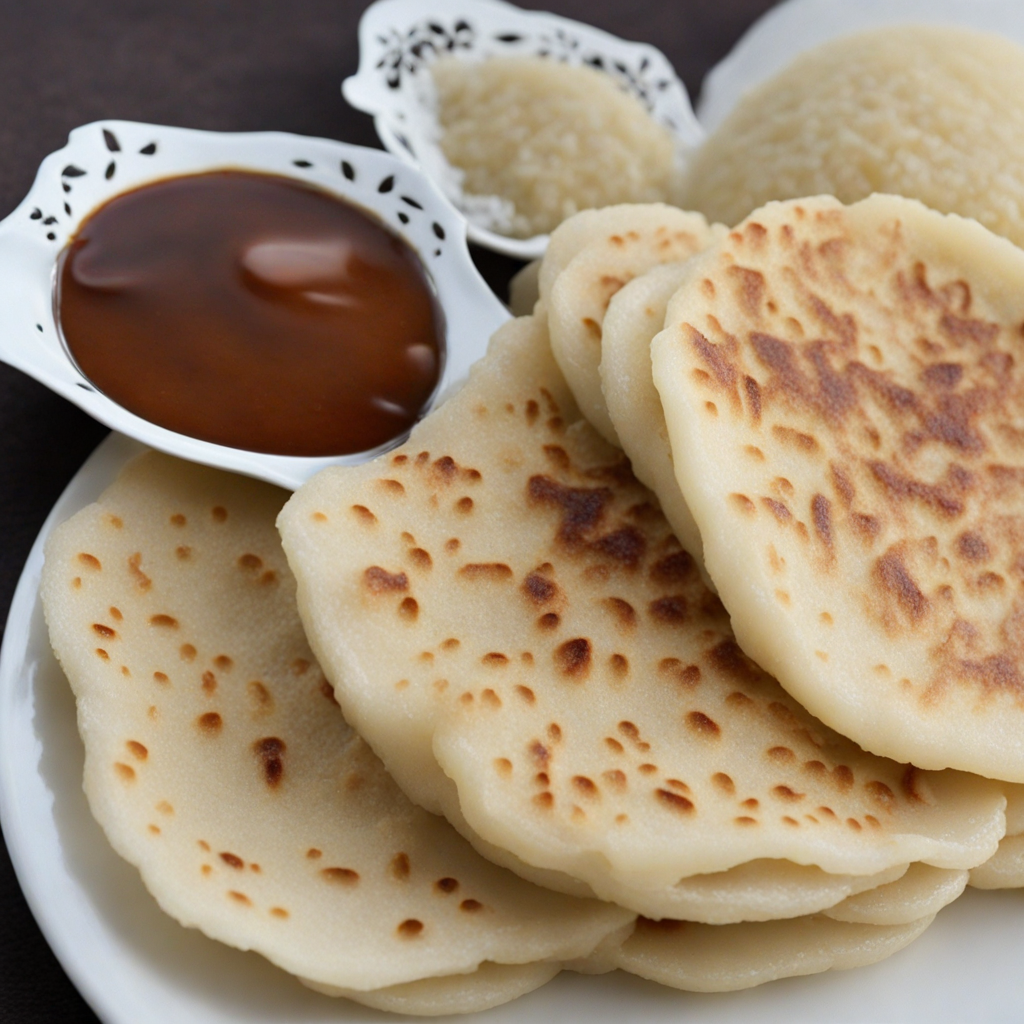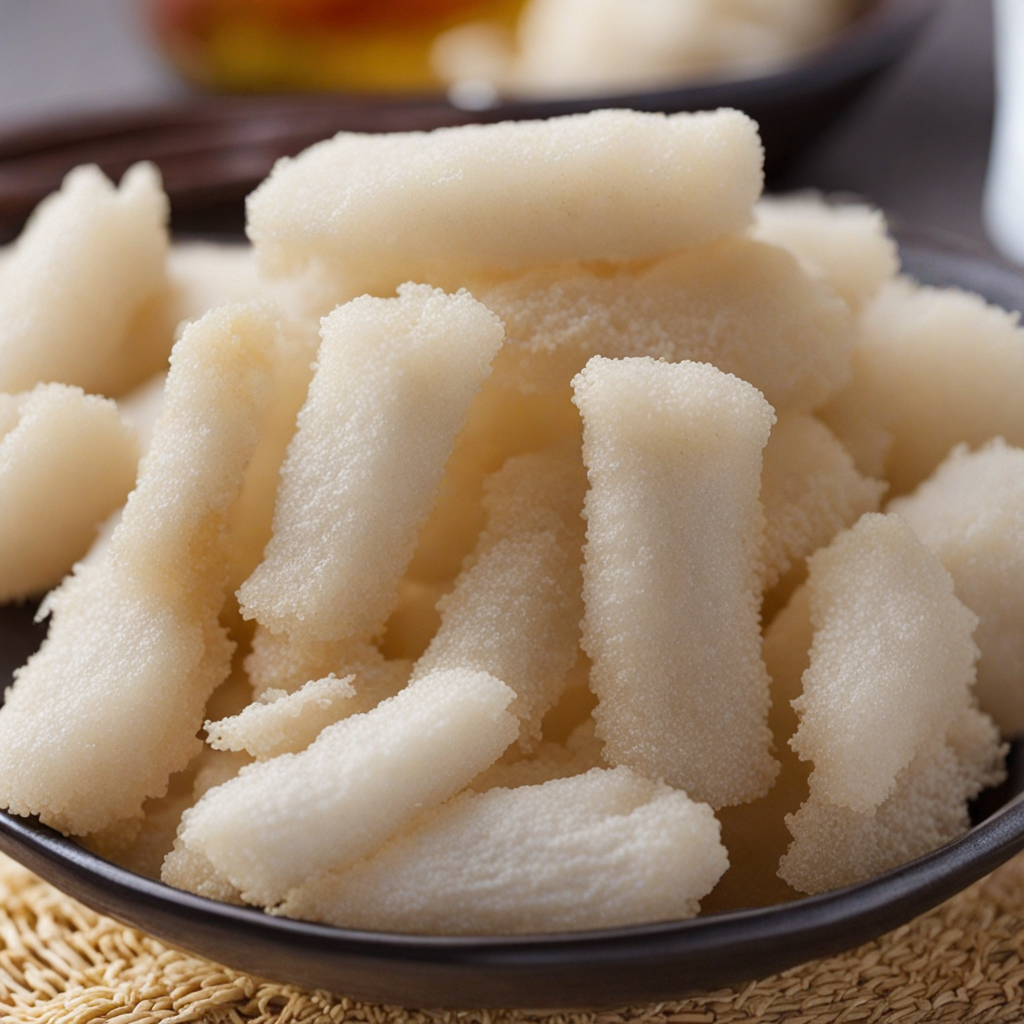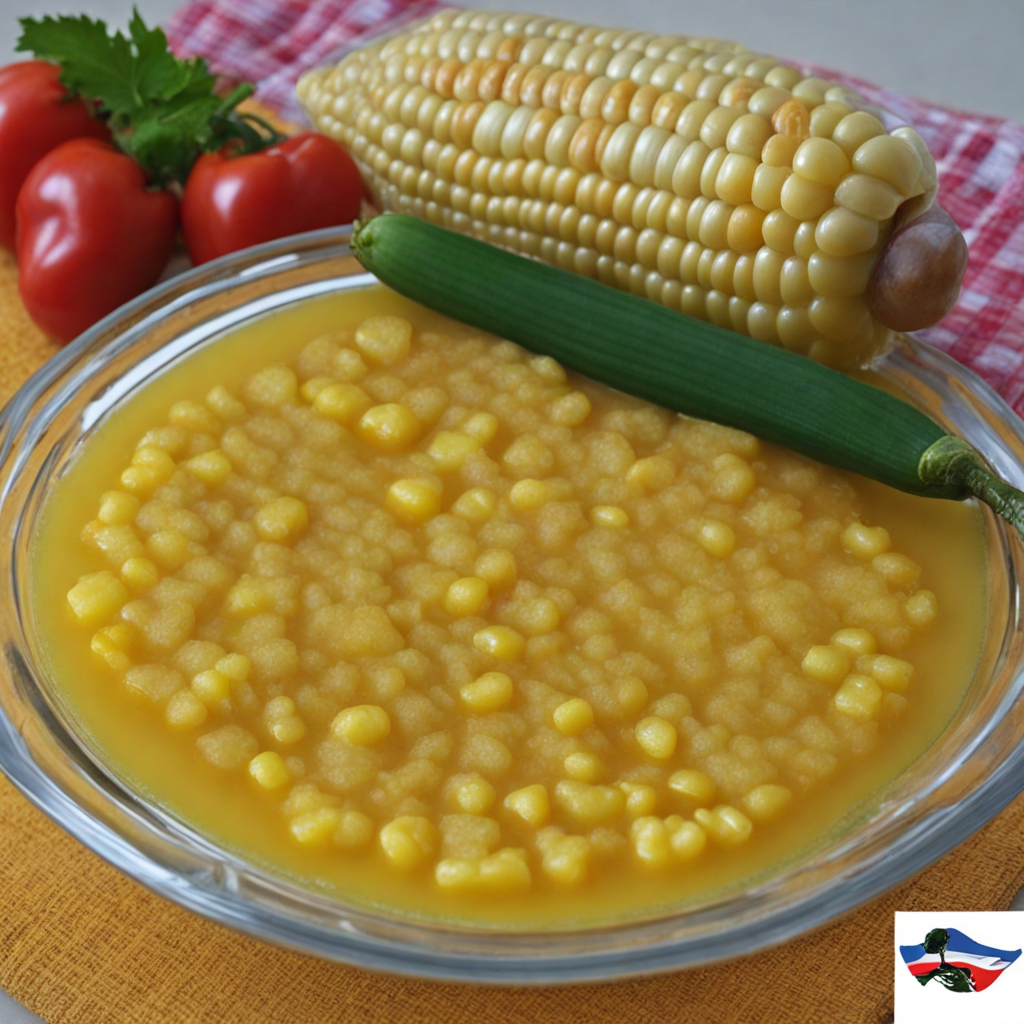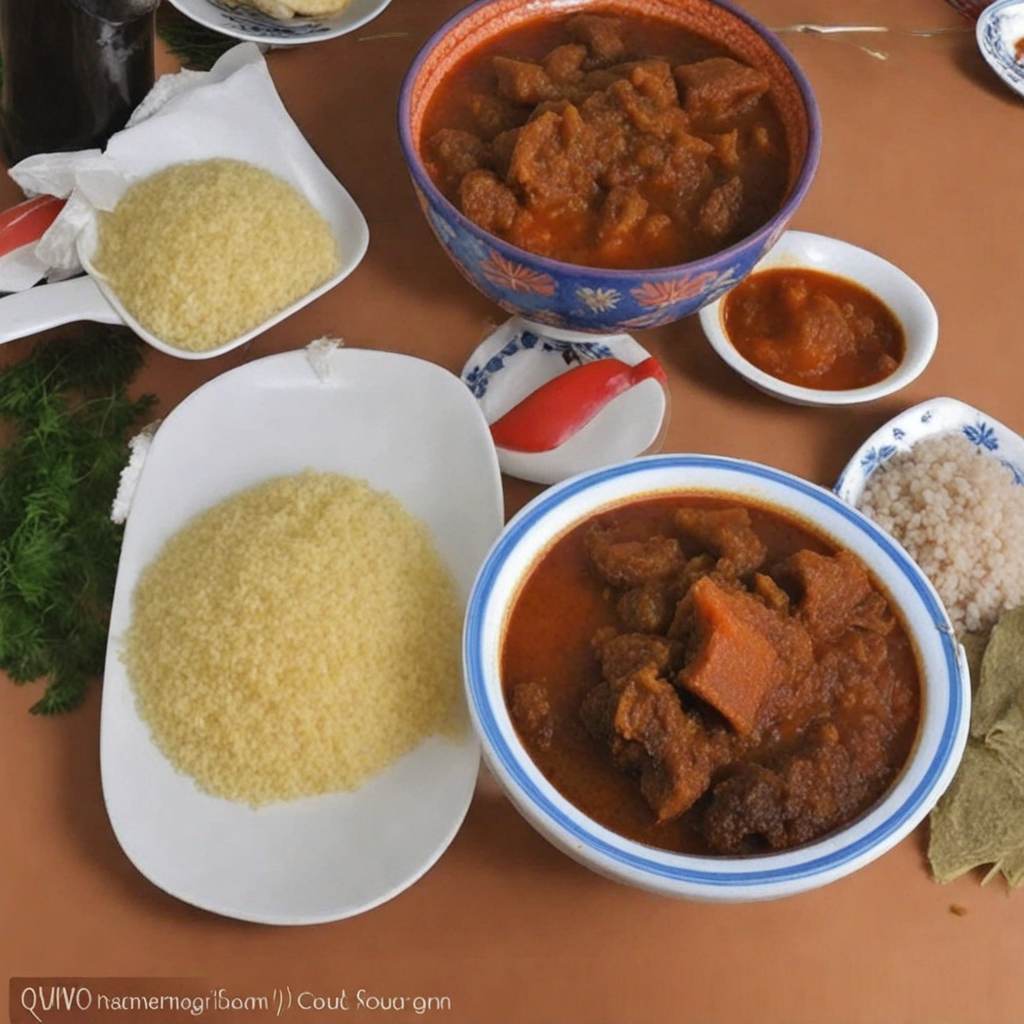Masa
Masa is a delightful Nigerian dish that embodies the rich culinary heritage of the northern regions of the country. This traditional rice cake is made primarily from a fermented batter of rice, which lends it a unique texture and flavor. The process begins with soaking rice, grinding it into a smooth paste, and allowing it to ferment, which not only enhances its taste but also gives it a slightly tangy note. The fermented rice is then mixed with a pinch of salt and sometimes spices, resulting in a batter that is both aromatic and inviting. Once the batter is prepared, Masa is typically poured into small, round molds and cooked until golden brown. The exterior is crispy and slightly crunchy, while the inside remains soft and fluffy, creating a delightful contrast in each bite. Often served as a snack or breakfast item, Masa can be enjoyed on its own or paired with various accompaniments such as honey, yogurt, or spicy pepper sauce, making it versatile for different palates. The dish is not only satiating but also packed with nutrients, thanks to its wholesome ingredients. What sets Masa apart is its cultural significance and communal spirit in Nigeria. It's often made for special occasions and gatherings, bringing people together to savor its unique taste. The dish's simplicity belies its rich flavor profile, making it a favorite among both locals and visitors eager to explore the depths of Nigerian cuisine. Whether you're enjoying it at a street vendor's stall or savoring a homemade version, Masa offers a memorable culinary experience that captures the essence of Nigerian hospitality.
How It Became This Dish
The History of Masa: A Culinary Delight from Nigeria Masa, a traditional Nigerian food, is a delightful rice cake that has captured the hearts and palates of many across the nation and beyond. With its origins deeply rooted in the northern regions of Nigeria, masa reflects the agricultural practices, cultural heritage, and culinary innovations of the Hausa people. This exploration of masa will delve into its origins, cultural significance, and its evolution over time. #### Origins of Masa Masa finds its roots in the Hausa ethnic group, one of the largest and most influential communities in West Africa. The word "masa" itself is derived from the Hausa language, underscoring its deep cultural ties. The preparation of masa involves a unique process that begins with the selection of high-quality, locally sourced rice. Traditionally, the rice is soaked, then ground into a fine paste, and mixed with yeast, giving it a light and fluffy texture upon cooking. This technique of fermentation is a testament to the ingenuity of the Hausa people, who have mastered the art of transforming simple ingredients into a culinary masterpiece. Historically, rice was introduced to West Africa through trade routes that connected the region with Asia and the Middle East. The Hausa people, known for their trade and agricultural prowess, embraced rice cultivation, leading to the development of various rice-based dishes, including masa. As rice became more integrated into local diets, masa emerged as a staple food, frequently enjoyed during special occasions and communal gatherings. #### Cultural Significance Masa is not merely a dish; it is a symbol of hospitality and community in Nigerian culture. It is commonly served during festive occasions, weddings, and other celebrations, where it is often accompanied by a variety of sauces, stews, and dips, such as pepper sauce or a spicy tomato sauce. The preparation and sharing of masa create a communal bond, reinforcing relationships among family and friends. In addition to its role in celebrations, masa holds spiritual significance in some contexts. It is sometimes offered as a food of blessing during prayers and rituals, embodying the idea that sharing food brings people closer to each other and to the divine. The act of making masa is often a communal activity itself, where women gather in groups to prepare the dish, exchanging stories, laughter, and wisdom, thus preserving not only the recipe but also the cultural narratives that accompany it. #### Development Over Time Over the years, masa has evolved in its preparation and presentation, adapting to changing tastes and influences while remaining true to its roots. Traditionally, masa was cooked in a masa pan, a specially designed shallow, round pan that allowed for even cooking over an open flame. However, with the advent of modern cooking appliances, such as electric griddles and non-stick frying pans, the preparation of masa has become more accessible, allowing for variations in cooking techniques. As Nigeria’s urban centers expanded, the demand for masa grew, leading to the rise of street vendors and restaurants specializing in this dish. These vendors often serve masa as a quick snack or breakfast item, reflecting the fast-paced lifestyle of city dwellers. The addition of various toppings and fillings, such as meat, vegetables, or even cheese, showcases the adaptability of masa, catering to diverse palates while maintaining its traditional essence. The globalization of food culture has also influenced masa's development. With the rise of social media and food blogs, traditional Nigerian dishes, including masa, have gained international recognition. People from different cultural backgrounds are now experimenting with masa, incorporating it into fusion cuisine, and introducing it to new audiences. This cross-pollination of culinary techniques has sparked creativity, resulting in innovative variations of masa that blend local flavors with global influences. #### Masa Today: A Culinary Renaissance Today, masa continues to thrive as a beloved dish in Nigeria and beyond. Its versatility has made it popular not only as a main dish but also as a side, snack, or breakfast item. Chefs and home cooks alike embrace masa, often showcasing it at food festivals and culinary events, celebrating its rich heritage while exploring contemporary presentations and flavors. In recent years, there has been a growing movement toward preserving traditional culinary practices in Nigeria. This has led to a renewed interest in masa, with many exploring its historical roots and the stories behind its preparation. Culinary schools and workshops are increasingly including masa in their curricula, ensuring that future generations understand the importance of this dish in Nigerian cuisine. Furthermore, masa has found its way into international culinary spaces, where it is often showcased at Nigerian-themed events or restaurants. As the world becomes more interconnected, masa serves as a bridge, inviting others to experience the flavors and traditions of Nigerian culture. This culinary renaissance not only honors the past but also paves the way for masa to evolve further, reflecting the dynamic nature of food and culture. Conclusion Masa is more than just a food item in Nigeria; it is a rich tapestry woven from history, culture, and community. From its origins among the Hausa people to its contemporary iterations, masa embodies the spirit of Nigerian hospitality and togetherness. As we explore the culinary landscape of Nigeria, masa stands out as a symbol of resilience and adaptability, reminding us of the power of food to connect people across generations and cultures. Whether enjoyed at a festive gathering or as a quick street-side snack, masa continues to be a beloved dish that brings joy and sustenance to many, ensuring its place in the hearts of those who cherish it.
You may like
Discover local flavors from Nigeria






